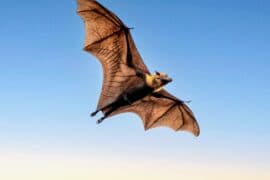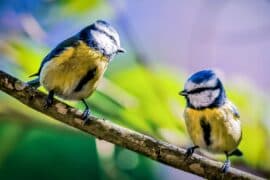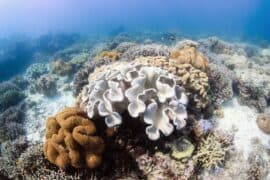Asiatic rhinoceros beetle
(Oryctes rhinoceros)

Description
The Asiatic rhinoceros beetle, coconut rhinoceros beetle or coconut palm rhinoceros beetle, (Oryctes rhinoceros) is a species of rhinoceros beetle of the family Scarabaeidae. O. rhinoceros attacks the developing fronds of raffia, coconut, oil, and other palms in tropical Asia and a number of Pacific islands. Damaged fronds show typical triangular cuts. The beetle kills the palms (particularly newly planted ones) when the growing point is destroyed during feeding. They also infest dead trunk debris. This large species has an average length of about 33 to 40 mm. Adults are dark brown to black in color with shiny dorsum. Head with a prominent horn. Male has longer horn than the female. Male is characterized by a rounded, shiny terminal abdominal segment whereas female has a relatively hairier 'tail'. There are two tubercles on the thoracic ridge. Adult female lay yellowish-white oval eggs which are about 3 mm in diameter. Eggs are typically laid inside rotting vegetative matter. After one week, they swell and later hatch within 11 to 13 days. Grub stage undergo three instars before becoming a pupa. Grubs are yellowish-white where the third instar grow to 60 to 100 mm in length. Cranium is dark brown, with many round pits. There are minute setae on cranium. Thoracic spiracles are about 1.85 to 2.23 mm long. Respiratory plate consists with small, round to oval holes. Thoracic spiracles are larger than abdominal spiracles. Pupa is yellowish-brown with about 50 mm in length. There are horn-shaped protuberances on the anterior surface. In 1985, heavy infestations on coconut has been observed from Malaysia. Then in 1911, they appeared in Myanmar. In early 1900s, it was observed from potted rubber seedlings from Sri Lanka which was later introduced to Upolu island in Western Samoa in 1909. Adults and grubs usually attack coconut and oil palm cultivations, where they are considered as a major pests. Adults feed on crown region of the palms. Then they bore through petiole bases into the central unopened leaves. This results tissue maceration and dieback. Presence of the animal can be visible due to fibrous frass found inside and at the entrance to the feeding hole. Most often fronds became wedge-shaped gaps or characteristic V-shaped cuts to fronds.
Taxonomic tree:







